Kerala Kalam, " Paying homage to god Vettakkorumakan" — part 4
Accompanied by the powerful sounds of drums (chenda) and oboes (kuzhal), the oracle, adorned with a red cloth around the loins, emerges from the inner sanctum, wielding a straight sword symbolising the divinity.
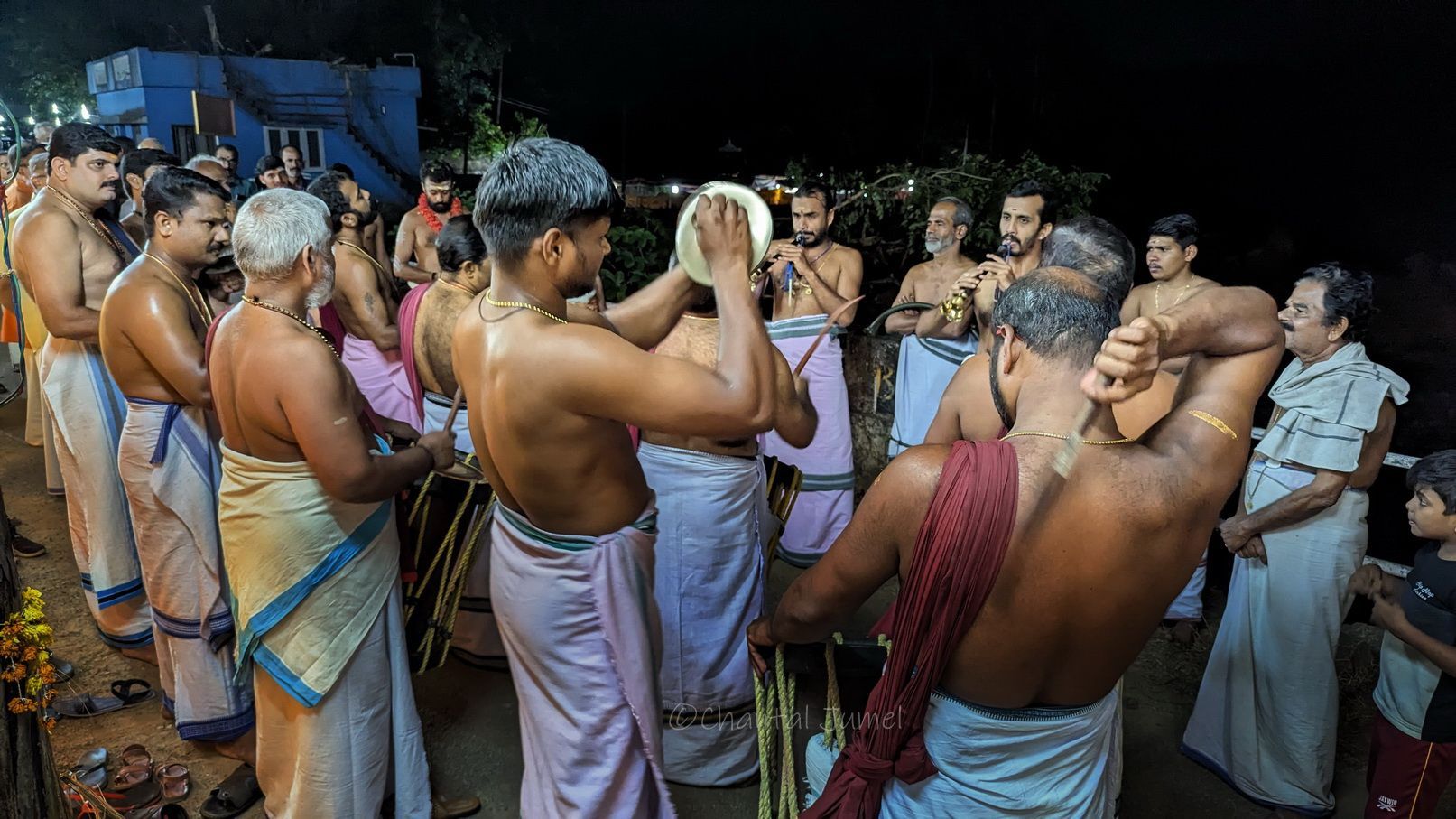
The painting has become a sacred realm, and those entrusted with its creation have manifested the divine form that can be seen, heard, and touched. There is no need for initiation or guidance; the materialisation of the “divine body” and the deliberately theatrical staging of the ritual leads the viewer into an immersive and transformative experience.
Right from the start of my research, the colours of the kalam have exerted a particular fascination over me. They seem to emerge from the earth itself. Tones of ochre, burnt sienna and moss green blend harmoniously, to create a palette imbued with mystery that evokes the organic environment of the forest and a rustic elegance. Vettakkorumakan, in a classical pose, illustrates with dignity his role as the protector of Kerala. His masculine expression, imbued with nobility, reveals the majesty of his origin and the grandeur of his destiny.

Once the image is complete, the canopy above it, is adorned with garlands of oleander flowers and fringes made from tender coconut leaves. Practitioners then place offerings of husked and unhusked rice, and coconuts, on banana leaves around the kalam.
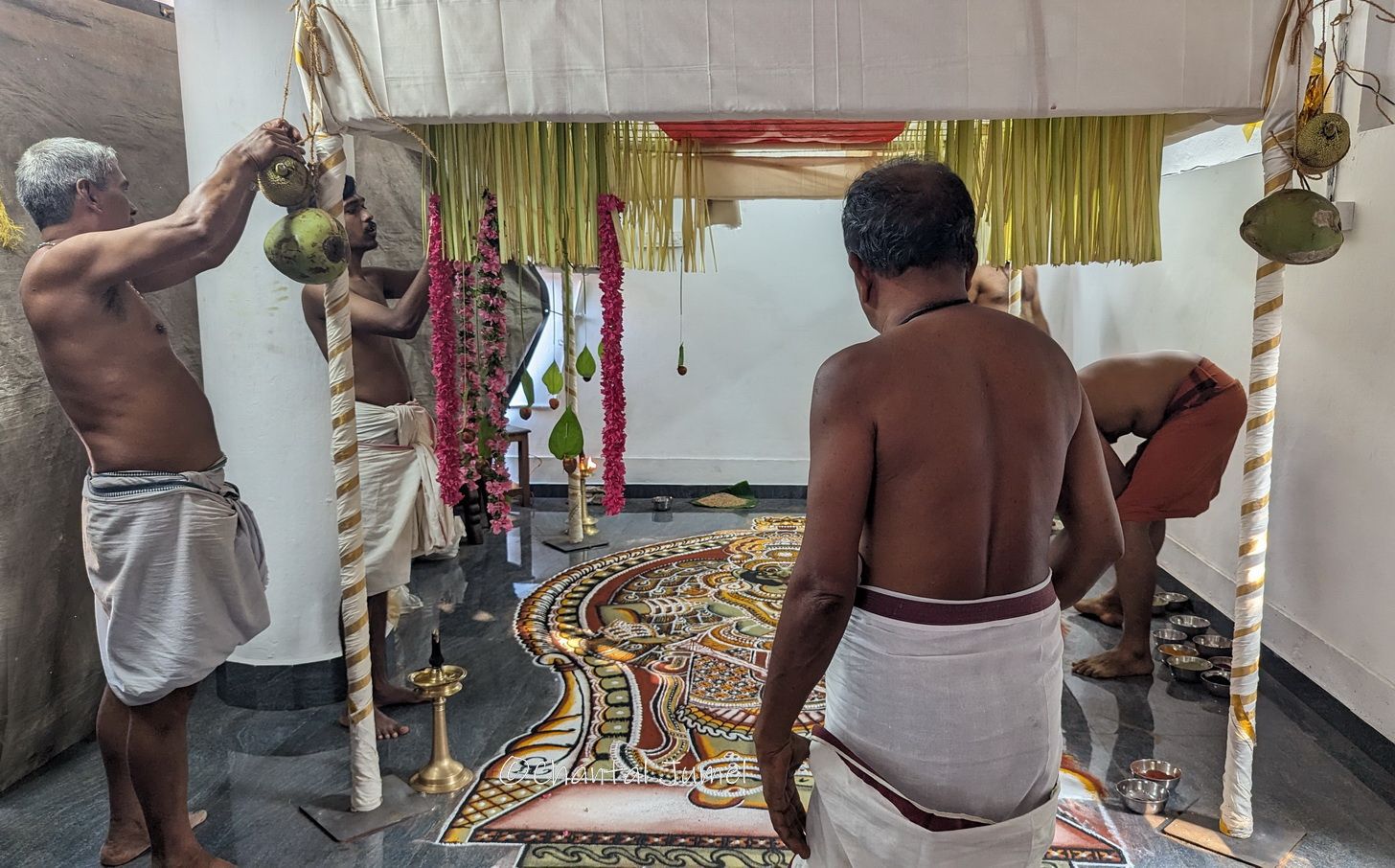
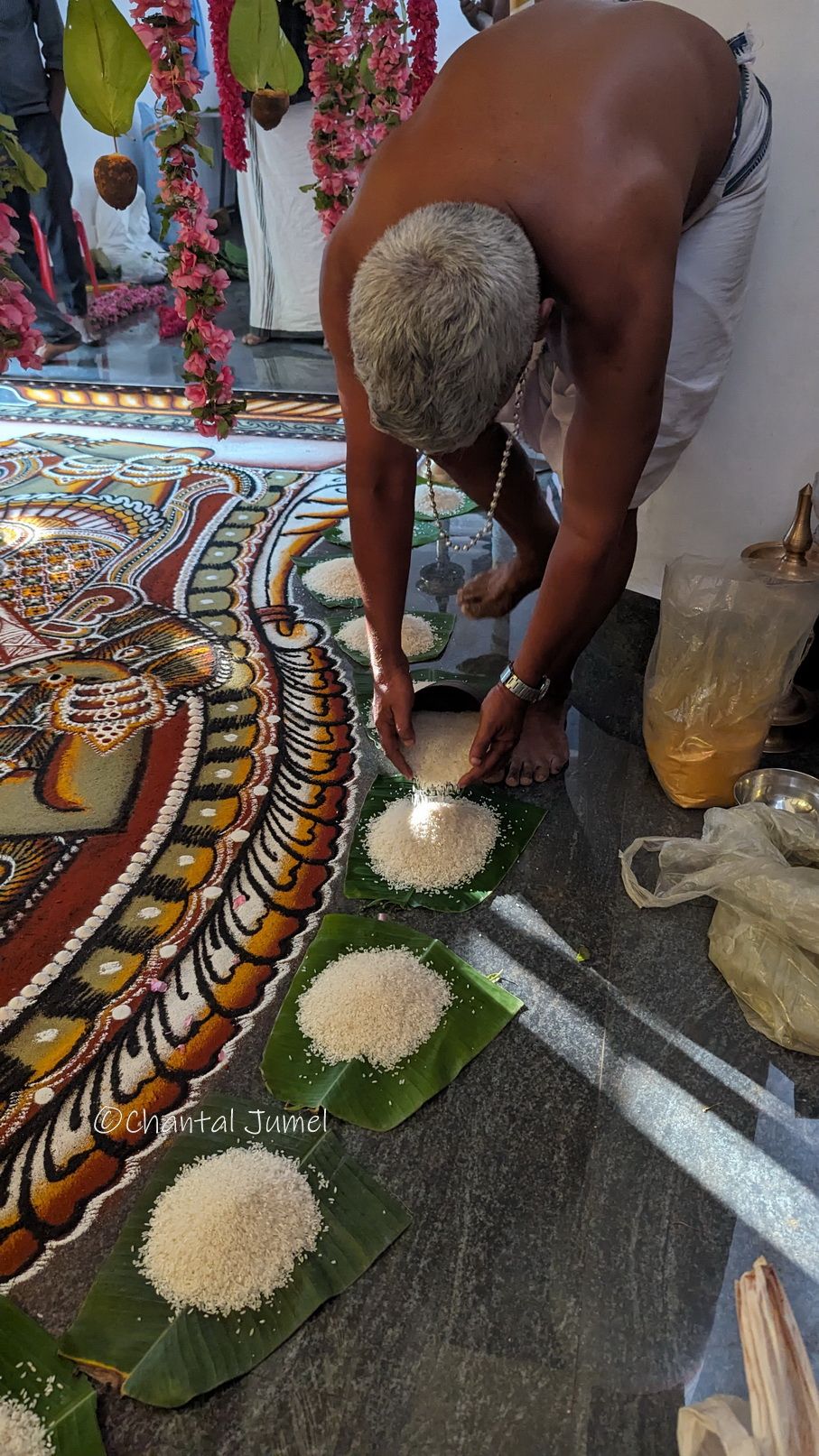
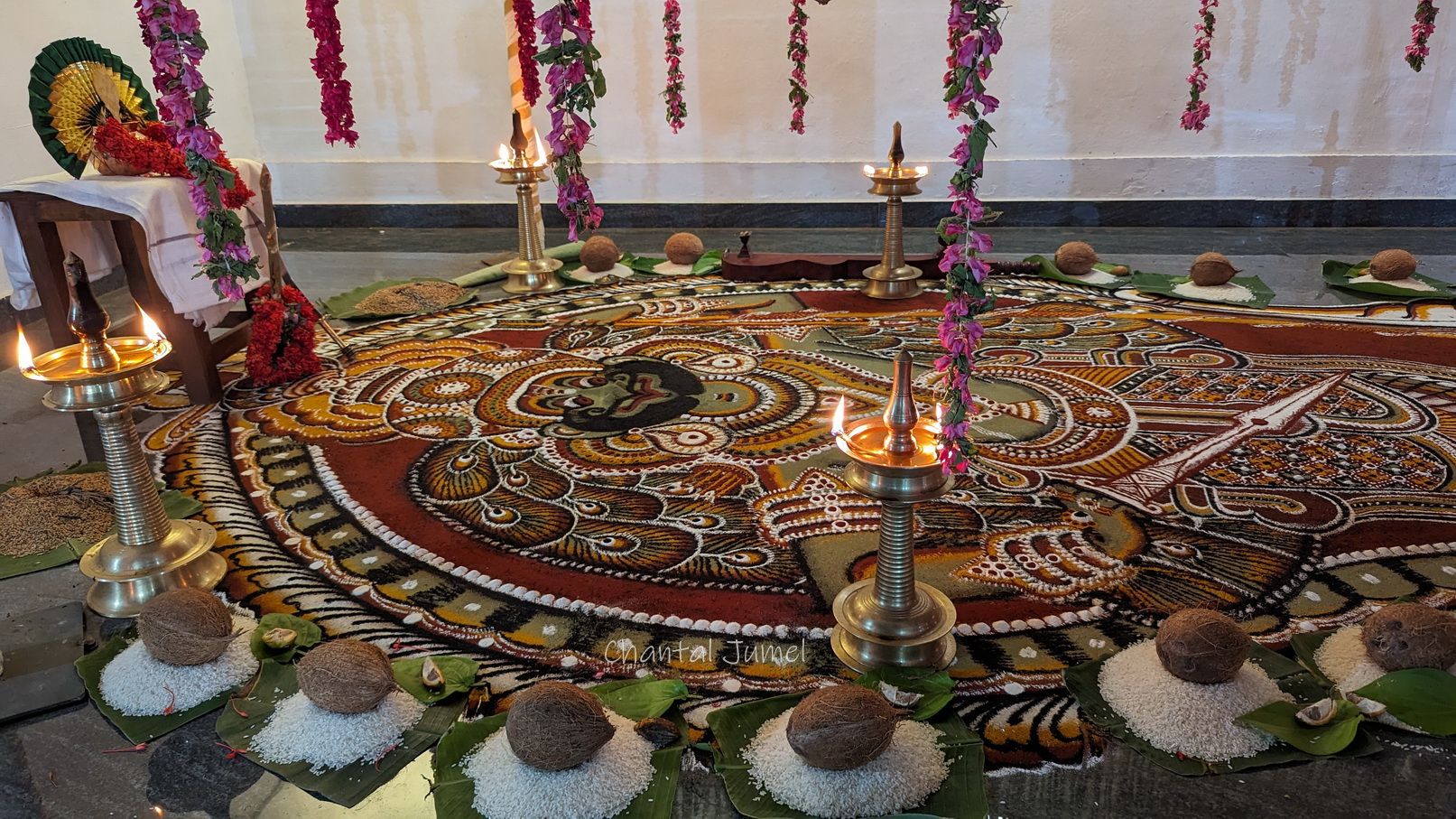
Villagers gather eagerly to gaze at the painting, but to my disappointment, few show genuine interest in the painstaking work that went into its creation. How can one not be moved by the way this fragile work powerfully evokes the transience of existence and the wisdom that comes from contemplating it? Paradoxically, its strength lies in its ephemeral nature.

Accompanied by the powerful sounds of drums (chenda) and oboes (kuzhal), the oracle, adorned with a red cloth around the loins, emerges from the inner sanctum, wielding a straight sword symbolising the divinity. Devotees light oil lamps all around the temple precinct, while the practitioners do the same around the kalam.
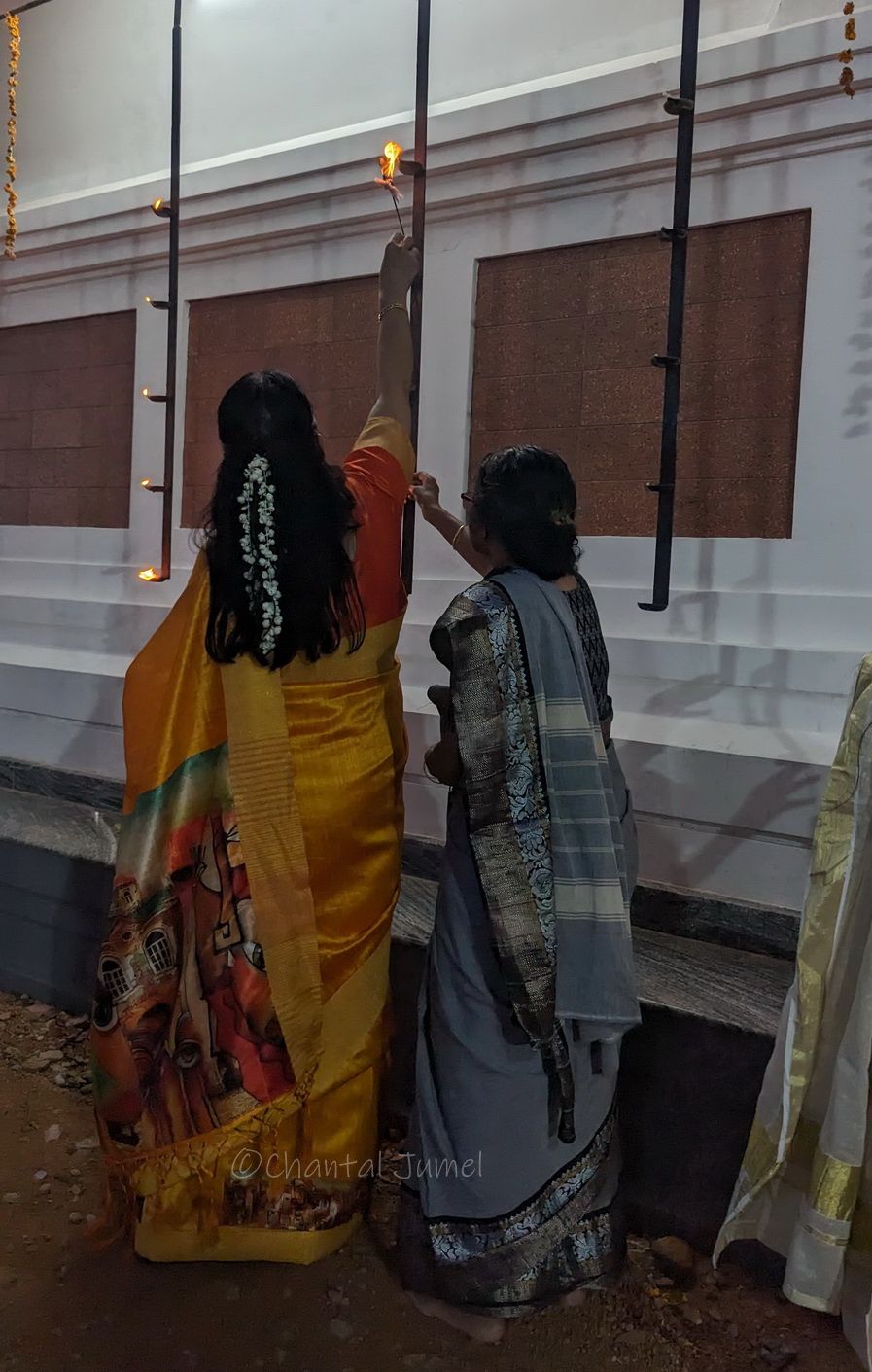
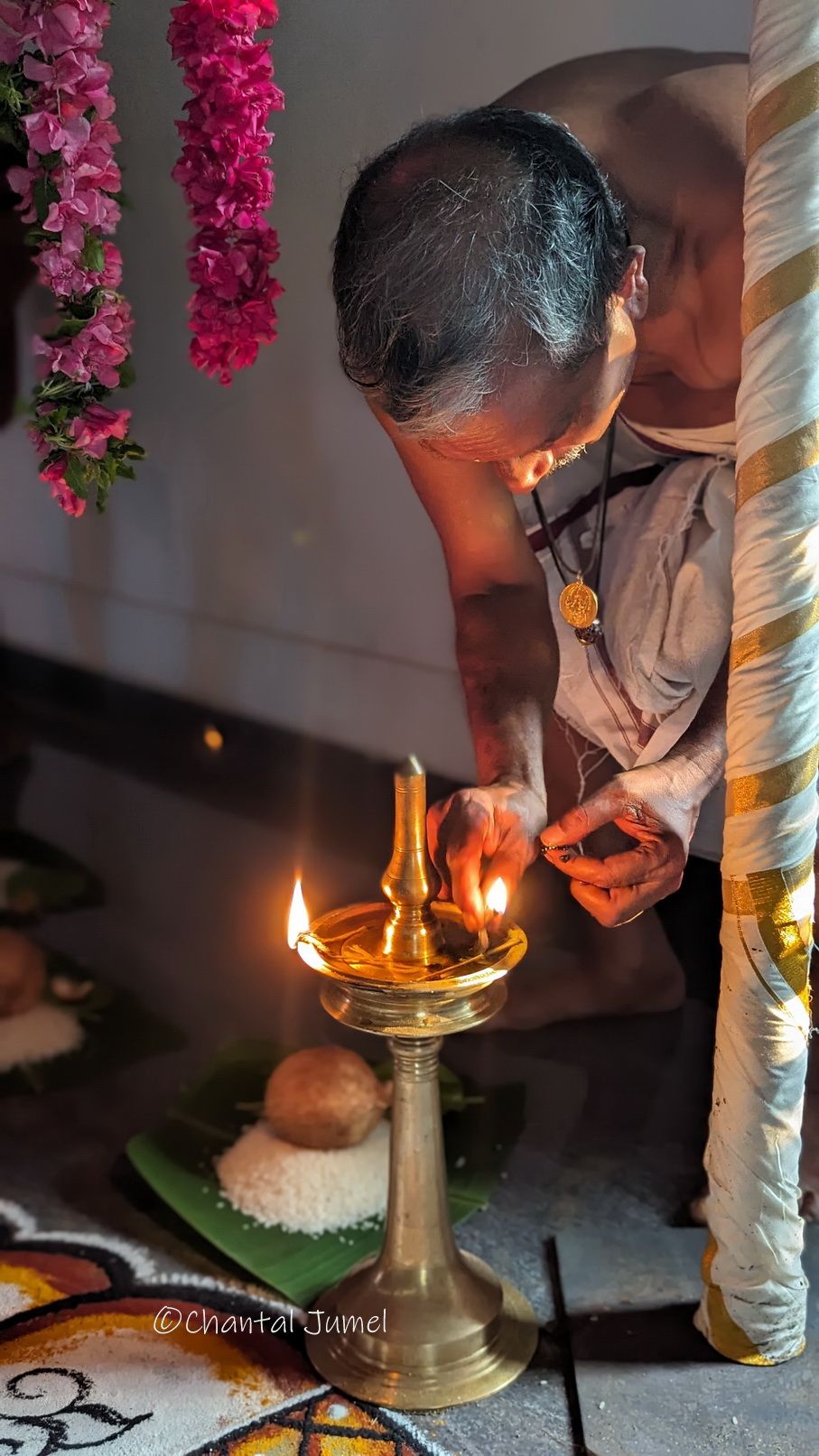

I put my thoughts aside to watch the procession form and make its way to the main sanctuary. There, the oracle, sword in hand, performs a series of rhythmic movements, steps, and leaps, accompanied by the Marar musicians, who patiently develop measures ranging from 1 to 10 beats. This dance, known as “eedum koorum,” prepares the oracle to receive the divine essence, that gives him the power to communicate with the devotees.

The musicians then escort the oracle to the kalam, around which he first performs several slow circumambulations (kalapradakshinam). As the tempo of the chenda increases, the oracle speeds up his movements and enters the kalam, cutting through all the plant decorations hanging from the canopy.

These evokes the forest and, by analogy, the act of self-renunciation. In Hinduism, the forest corresponds to the third stage of life, called vanaprastha, which means “path of the forest.” Vanaprastha marks the stage when an individual entrusts household duties to the younger generation, assumes an advisory position, and gradually withdraws from worldly affairs. This phase typically follows the status of head of the house (grihastha). For the devotee who has dedicated part of his life to caring for his family, it is time to devote himself to the study of sacred texts and to spiritual practice.
Little by little, a jumble of leaves and banana fringes covers the painting, which has been battered by the repeated assaults of the oracle. To the rhythm of the drums, he gradually erases the divine figure, leaving only the powdered face, while tracing a sacred formula on the mound with his index finger. The divine body, freed from its material form, remains in its essence. At this moment, the atmosphere of reverence in this space is broken by the words of the oracle, who approaches the patrons and delivers his message. Some members inquire whether the divinity is satisfied with the offerings, to which he replies in the affirmative.
The ritual ends in silence, and the kalam powders, along with the grain offerings are distributed to the temple trustees and the devotees. These images, truly intricate works of art, reveal their full meaning as they are erased, thus embodying the profound message of the adage from the Book of Genesis (Gen 3:19): "Remember, man, that you are dust and to dust you shall return" (Latin: Memento, homo, quia pulvis es, et in pulverem reverteris).
The following day, the ceremony is repeated, but with three additional Kuruppu officiants and a larger number of Marar musicians. The Vettakkorumakan kalam is also more detailed and grandiose.
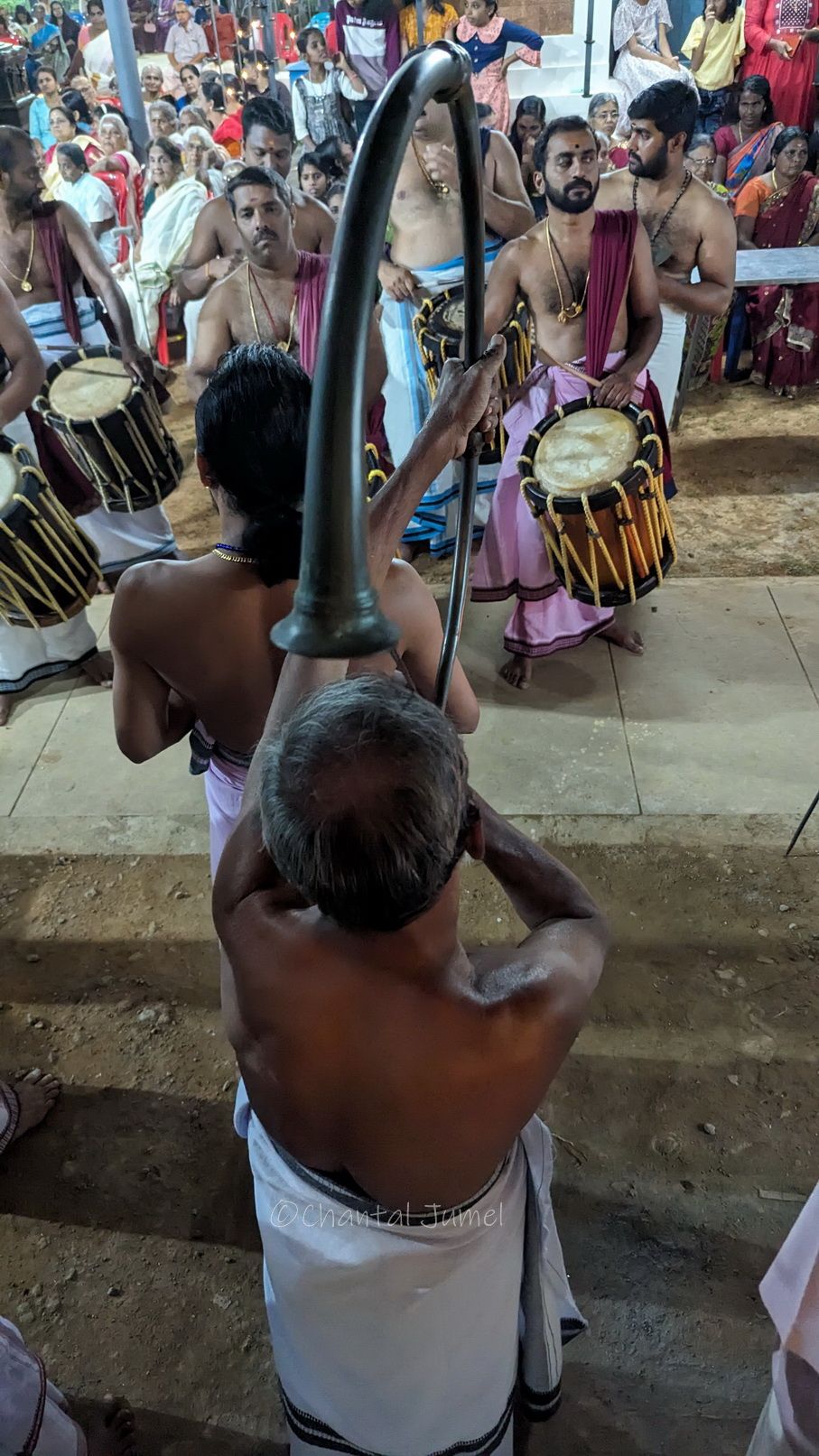
The climax, however, is the final ritual in which the oracle breaks twelve thousand coconuts without interruption, hurling them in rhythm onto a stone slab. This performance, known as pantheeraayiram (twelve thousand), is considered the most cherished offering to the hunter-god in temples across northern and central Kerala. Symbolically, the coconut represents the head, while the act of breaking it materialises the letting go of existential vicissitudes.

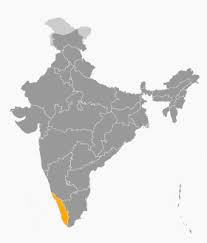
Story to be continued...
Previous articles:
Kerala Kalam, "On my way to the village of Paruthipulli" — part 1
Kerala Kalam, “Visiting the Kalamandalam School” — part 2
Kerala Kalam, "Painting Vettakkorumakan, the hunter-god" — part 3
